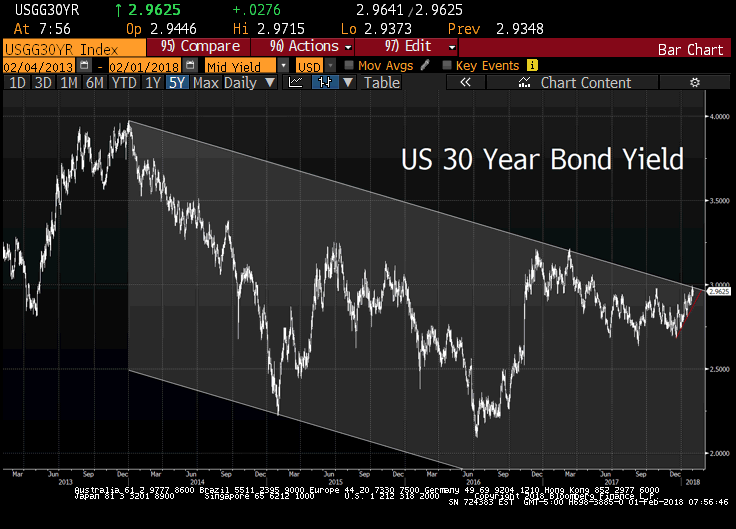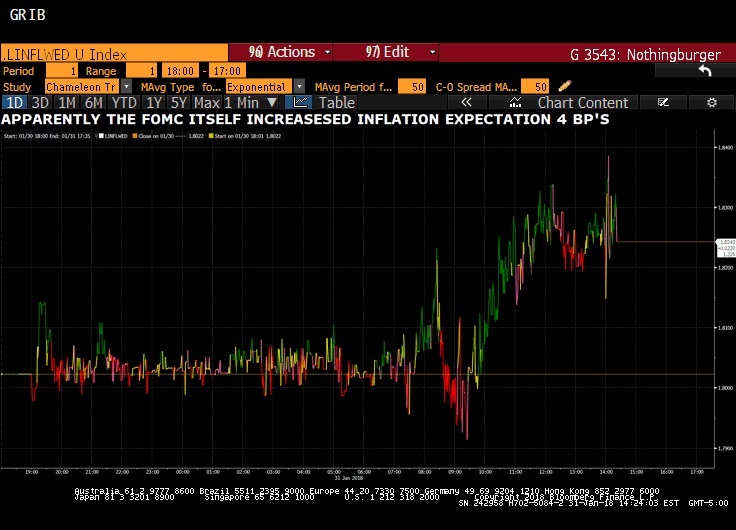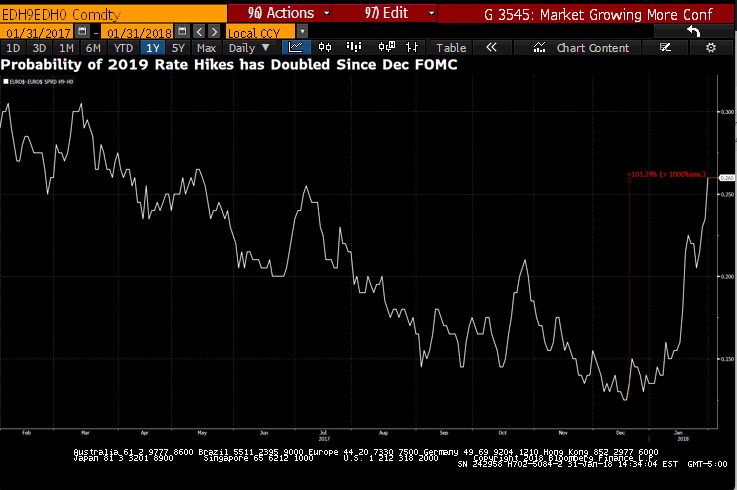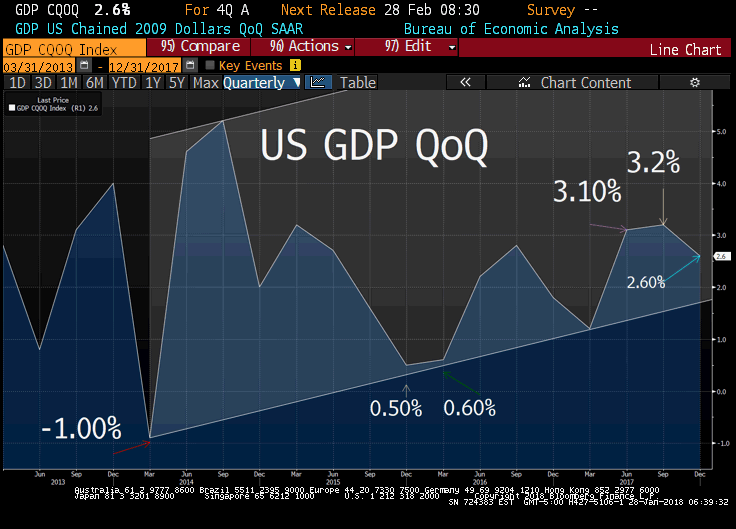Join our Larry McDonald on CNBC’s Trading Nation, Wednesday at 3:05pm ET
Pick up our latest report here:
Don’t miss our next trade idea. Get on the Bear Traps Report Today, click here“We believe inflation is set to finally pick up in 2018. Much of the passive and quant-side (a $1.5T shift in asset management) has become heavily invested in the “risk parity” model which involves being long equities and bonds on a risk-adjusted basis. One of the fundamental problems with this strategy is you’re effectively really long disinflation. Sure, it’s worked very well in the post great financial crisis period, but it’s a grossly crowded trade and has all the makings of a gruesome slaughterhouse. In this case, the risk tail is a period where equities and bonds fall together, which is not that uncommon in a late cycle inflationary environment (see 1980s and 1990s). Other than out of the money puts in rates (bonds) a big way for these guys to hedge inflation is to increase commodity exposure. As long-time bulls, we’re now ‘pounding the table’ bond bears for 2018.”
Bear Traps Report, January 2, 2018
This week’s FOMC meeting marked Janet Yellen’s final meeting as Chairwoman of the Federal Reserve.
The Long Bond, on a Key Technical Level

The US 10 year has already broken the trend line above. Fed policy, strong global growth and the new kid on the block, US fiscal policy have driven the latest round of selling. Pick up our latest Bear Traps Report for our detailed investment thesis of 2018.
No rate hike was expected at this week’s meeting, and none came, leaving the midpoint target level at 1.375%. The next 25bp increase – up to 1.50%-1.75% from 1.25%-1.5% – will come, in all likelihood, at the March meeting with Chairman-elect Jerome Powell at the helm.
Inflation Expectations
The big news of the day (see above) came when the Fed raised near-term inflation outlook to above two percent, driving the two-year bond yield even higher, while the long end (30s) rallied, thus more flattening.
The probability of rate hikes in 2019 has doubled since the last FOMC meeting:
 The thing to keep your eye on, in our opinion, is the probability of four hikes in 2018, instead of the three (the recent consensus). The Street was hawkish today before the meeting. Much of the debate comes from the Fed’s word choice on near-term risks to the economic outlook. The Fed reiterates these risks as “roughly balanced,” a nod away from Goldman Sachs’ expectations that these risks would now be just “balanced”. Chair Yellen left today as dovish as she came, and the Street is looking at the Powell team as by definition, more hawkish (more likely to pull back accommodation).
The thing to keep your eye on, in our opinion, is the probability of four hikes in 2018, instead of the three (the recent consensus). The Street was hawkish today before the meeting. Much of the debate comes from the Fed’s word choice on near-term risks to the economic outlook. The Fed reiterates these risks as “roughly balanced,” a nod away from Goldman Sachs’ expectations that these risks would now be just “balanced”. Chair Yellen left today as dovish as she came, and the Street is looking at the Powell team as by definition, more hawkish (more likely to pull back accommodation).
Pick up our latest report here:
Don’t miss our next trade idea. Get on the Bear Traps Report Today, click hereThe probability of four or more rate hikes in 2018:
Jan 24%
Dec 5%
Nov 3%
Bloomberg data
Data-dependent, gradual raising Yellen hands the baton today over to a similarly data-dependent Powell. However, if the data (recently firming prices and slightly higher, yet still sub-2%, PCE) is allowed to speak for itself, it was reasonable to expect a hawkish tone in today’s statement.
Today’s Chicago PMI printed 65.7, soundly beating the consensus estimate of 64, yet lower than the unsustainable prior-revised 67.8. Upcoming significant data releases include Jobless Claims and Nonfarm Payrolls, on Thursday and Friday respectively.
Yellen, while ill-advised to act based on market prices has a history of mentioning “rich asset valuations”, and must be keeping her eye on the technically-overbought S&P 500, which, even with this week’s move off the highs, is up 5% YTD, or an annualized rate of 83%. NY Fed President Dudley recently expressed concern about the possibility of an “overheating” economy that appears to be stretching its cycle after the passage of tax reform.

 The 2.6 percent headline rate doesn’t do justice to fourth-quarter GDP where consumer spending rose a very strong 3.8 percent that reflects a 14.2 percent burst in durable spending. Bloomberg noted Residential investment, which is another consumer-related component, rose at a very impressive 11.6 percent annualized rate. Turning to business spending, nonresidential fixed investment rose at a 6.8 percent rate which is the fourth straight mid-single digit result.
The 2.6 percent headline rate doesn’t do justice to fourth-quarter GDP where consumer spending rose a very strong 3.8 percent that reflects a 14.2 percent burst in durable spending. Bloomberg noted Residential investment, which is another consumer-related component, rose at a very impressive 11.6 percent annualized rate. Turning to business spending, nonresidential fixed investment rose at a 6.8 percent rate which is the fourth straight mid-single digit result.
